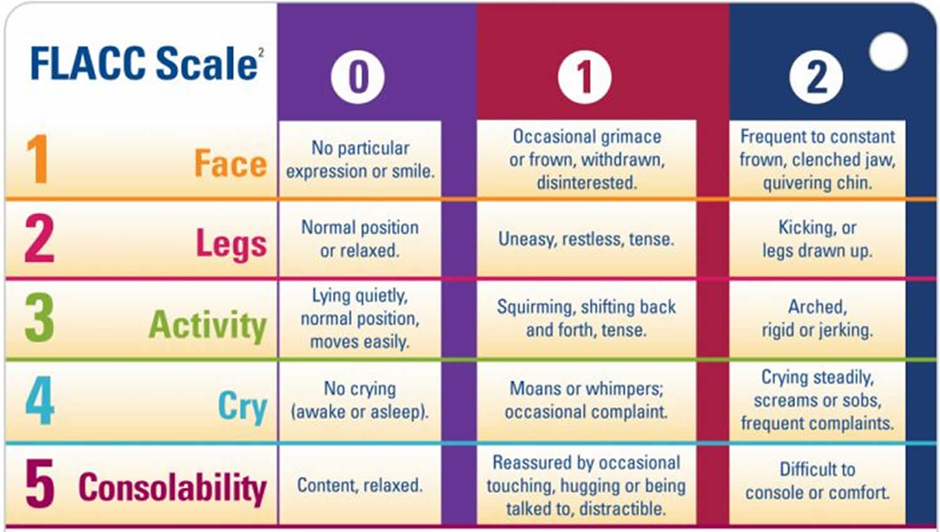A nurse is caring for a who speaks a different language than the nurse and is 6 hr postoperative. Which of the following actions should the worse take to determine the client's level of pain?
Use the FACES pain scale to gauge the client's level of pain.
Use a communication board to interact with the client.
Use the Face, Legs, Activity, Cry, Consolability (FLACC) scale to measure the client's pain level.
Ask an assistive personnel who speaks the same language as the client to interpret.
The Correct Answer is C
Choice A Reason:
Using the FACES pain scale to gauge the client's level of pain is appropriate. This scale relies on the client's ability to understand and communicate using a specific language, which might not be possible if there is a language barrier.
Choice B Reason:
Using a communication board to interact with the client is inappropriate. While communication boards can be helpful, they might not effectively gauge the client's level of pain, especially if the client's primary language isn't available on the board.
Choice C Reason:
Using the Face, Legs, Activity, Cry, Consolability (FLACC) scale to measure the client's pain level is appropriate. The FLACC scale is a pain assessment tool that evaluates pain in nonverbal patients or those who can't communicate effectively. It assesses facial expressions, leg movement, activity level, crying, and consolability to determine the level of pain the patient is experiencing.
Choice D Reason:
Asking an assistive personnel who speaks the same language as the client to interpret is inappropriate. Relying on an interpreter, even if they speak the same language as the client, might not be the best approach for pain assessment, as nuances related to pain expression and interpretation might be better captured through a standardized pain assessment tool like the FLACC scale.

Nursing Test Bank
Naxlex Comprehensive Predictor Exams
Related Questions
Correct Answer is A
Explanation
Choice A Reason:
"Call me so that I can help you change your position." This response offers practical assistance and comfort to the client. Repositioning can sometimes alleviate discomfort associated with breathing difficulties, and the nurse can offer guidance or physical help to adjust the client's position for improved comfort.
Choice B Reason:
"Try to close your eyes and get some sleep." This response doesn't directly address the client's immediate concern about difficulty breathing and may not offer practical help.
Choice C Reason:
"It is common for breathing to become more difficult as time goes on." While this statement acknowledges the situation, it might not provide the client with actionable guidance or support on how to manage the difficulty in breathing.
Choice D Reason:
"Therapy choices are limited for clients who do not want resuscitation." This response might be interpreted as dismissive or unrelated to the client's immediate needs, focusing more on the DNR order rather than addressing the current concern about breathing difficulties.
Correct Answer is A
Explanation
Choice A Reason:
Allowing the family to participate in washing the client's body is appropriate. In Islamic tradition, it's customary for family members or individuals of the same gender to participate in washing the deceased's body. This practice is a part of the Islamic ritual of ghusl (ritual washing). It's respectful and important to honor the religious and cultural customs of the deceased and their family.
Choice B Reason:
Providing the family with an eagle feather for the client's hair is inappropriate. In Islamic traditions, the use of eagle feathers or any specific animal-related items isn't a part of postmortem care rituals. Additionally, incorporating items from other traditions or cultures might not align with the religious practices or beliefs of the deceased and their family.
Choice C Reason:
Encouraging the family to chant a mantra before moving the body is inappropriate. Chanting mantras isn't a practice in Islamic postmortem care. Islamic rituals involve specific prayers and actions according to the teachings of Islam, and chanting mantras isn't a part of this tradition.
Choice D Reason:
Dressing the client in a special amulet provided by the family is inappropriate. The use of amulets or charms isn't typically part of Islamic postmortem rituals. Islamic customs emphasize modesty in dress and following specific rites for the deceased, but incorporating special amulets or charms isn't a common practice.
Whether you are a student looking to ace your exams or a practicing nurse seeking to enhance your expertise , our nursing education contents will empower you with the confidence and competence to make a difference in the lives of patients and become a respected leader in the healthcare field.
Visit Naxlex, invest in your future and unlock endless possibilities with our unparalleled nursing education contents today
Report Wrong Answer on the Current Question
Do you disagree with the answer? If yes, what is your expected answer? Explain.
Kindly be descriptive with the issue you are facing.
